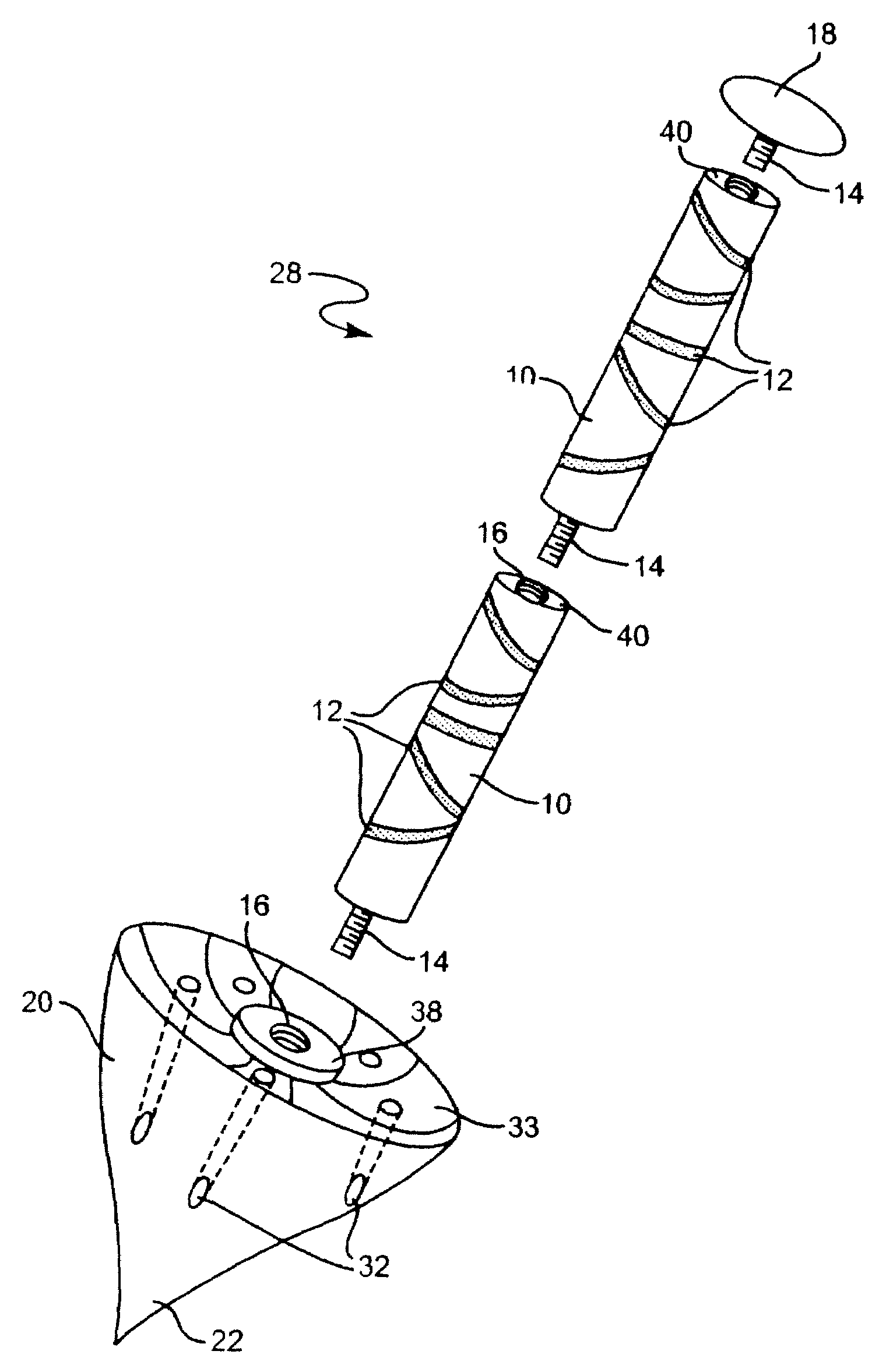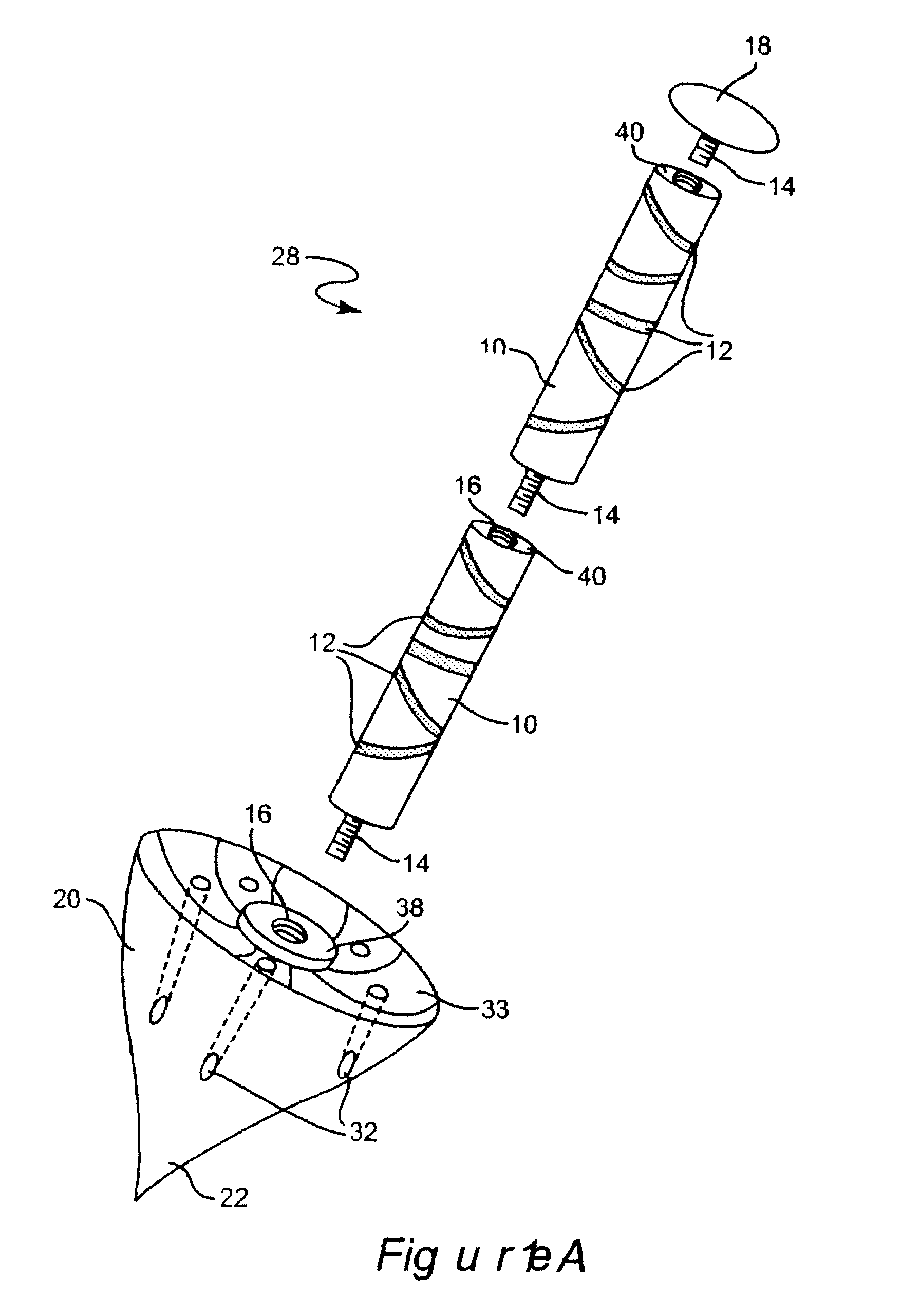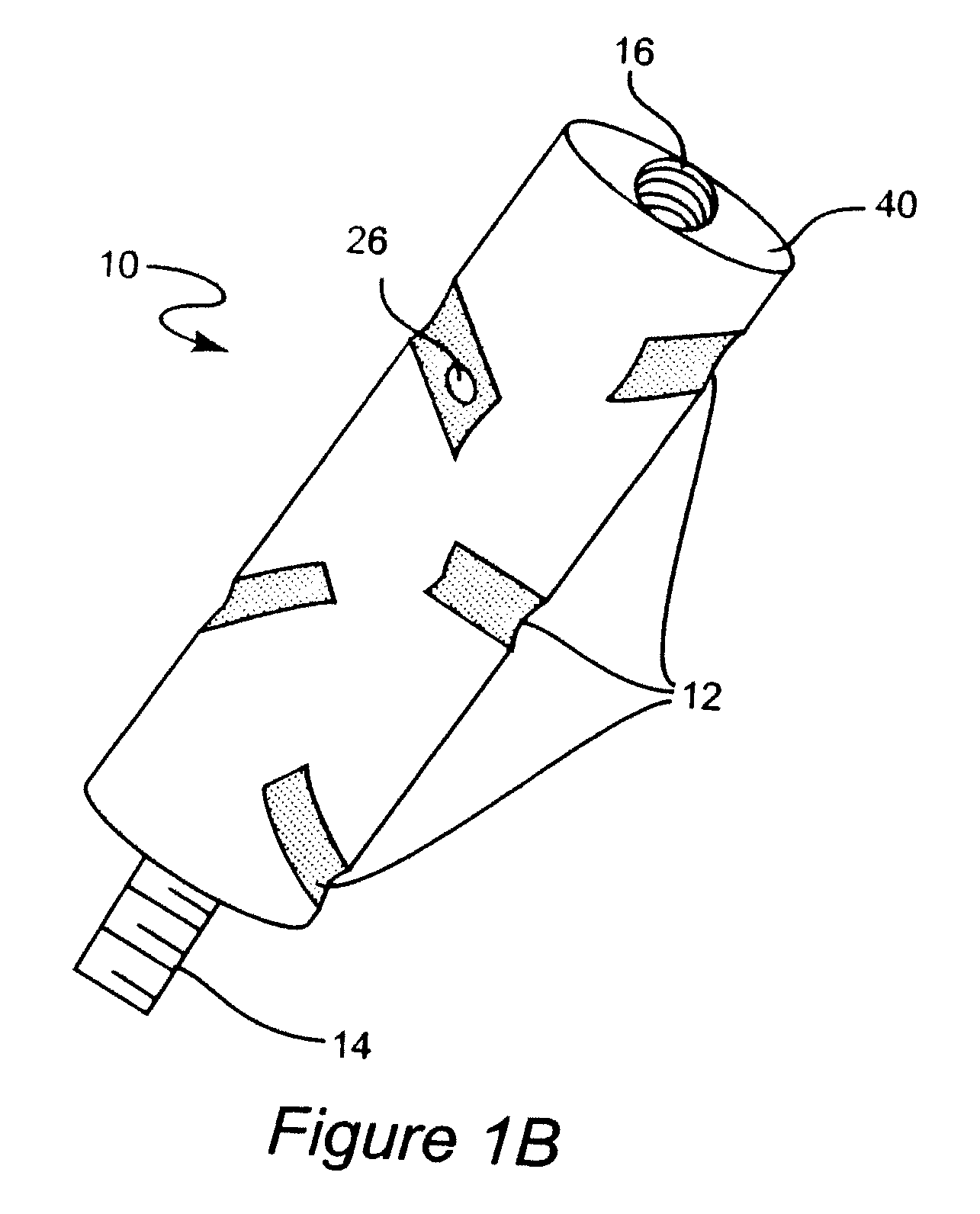Gardening Stake Kit for Plant Support, Nourishment and Training
a plant support and plant technology, applied in the field of plant support and training kits, can solve the problems of less fruit production, designed to add further vertical extensions, stem bending and breakage, etc., and achieve the effects of facilitating the installation of the shaft assembly into the ground, and facilitating the stability of the training system
- Summary
- Abstract
- Description
- Claims
- Application Information
AI Technical Summary
Benefits of technology
Problems solved by technology
Method used
Image
Examples
Embodiment Construction
[0031]Referring now to the drawings, and more particularly to FIG. 1A, there is shown an exploded view of one embodiment of a shaft assembly 28. The shaft assembly 28 includes at least one shaft segment 10, a cap 18 and a pointed base 20 with a catch basin 33. The shaft segment 10 includes a plurality of grooves 12. As shown in FIG. 1A, the grooves 12 can be formed to fully encircle the outer periphery of the shaft segment 10. Alternatively, the grooves 12 can be formed along only a portion of the outer periphery of the shaft segment 10 (as shown in FIG. 1B). In addition, as shown in FIG. 1B, the grooves 12 can include a hole 26 used for threading an arm 24 (as shown in FIG. 3C) through. Further, the grooves 12 are formed at more than one angle relative to the top and bottom of each shaft segment and, preferably, include horizontal grooves as well as angular grooves ranging between 10° and 80° and between 100° and 170° (e.g., angles of 45° and 135°).
[0032]In an alternative embodimen...
PUM
 Login to View More
Login to View More Abstract
Description
Claims
Application Information
 Login to View More
Login to View More - R&D
- Intellectual Property
- Life Sciences
- Materials
- Tech Scout
- Unparalleled Data Quality
- Higher Quality Content
- 60% Fewer Hallucinations
Browse by: Latest US Patents, China's latest patents, Technical Efficacy Thesaurus, Application Domain, Technology Topic, Popular Technical Reports.
© 2025 PatSnap. All rights reserved.Legal|Privacy policy|Modern Slavery Act Transparency Statement|Sitemap|About US| Contact US: help@patsnap.com



